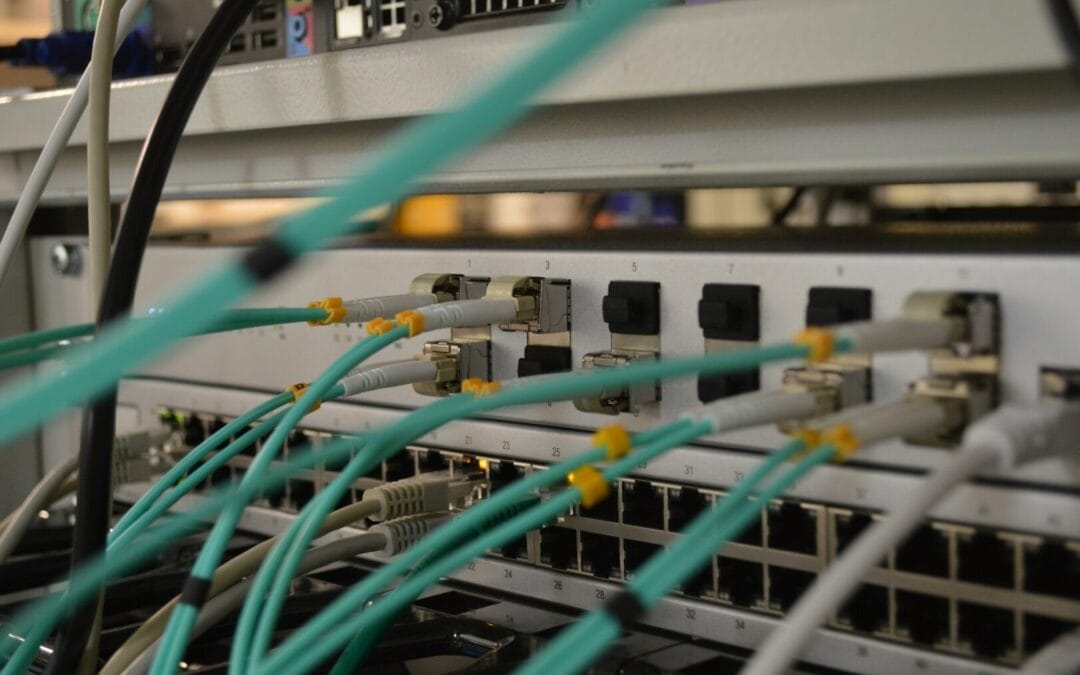Office renovations can breathe new life into a workspace. New layouts, fresh design, and upgraded systems can make a space more functional and welcoming. But plenty of problems can show up along the way, especially when it comes to hidden parts of your setup, like data cabling. If these cables are accidentally damaged or cut during demolition or drywall work, it can shut down major parts of your business—phones, internet, payment systems, even internal networks.
Boston has its own set of challenges. A lot of the buildings are old and not built with today’s network needs in mind. That means cables are often run through tricky or unexpected spots. When renovations start without a clear plan for those systems, it’s easy for something to go wrong. Knowing how to prepare before construction starts helps avoid outages and extra costs later.
Planning Phase
Before any demolition or hammer-swinging begins, it’s important to sit down with someone who understands network systems. Renovation crews know construction, but they aren’t usually thinking about where your data cabling runs inside walls, ceilings, or under flooring. Walking the space with a technician or network expert means everyone knows what to avoid and what to protect. This prevents damage that could interrupt your services mid-project.
Boston offices tend to have unique layouts. From older Back Bay brownstones converted into shared workspaces to corporate buildings with multiple retrofits, layouts don’t always match the blueprints. Previous tenants may have added their own networks or cable paths. Relying only on building plans can lead to wrong assumptions. That’s why a physical walkthrough is necessary, with testing tools to trace cable locations.
Here’s how to start smart:
– Schedule a pre-renovation session with a professional network technician who can trace and mark all existing cabling.
– Use building-friendly tools like cable locators or signal tracers to see what’s behind solid walls or ceilings.
– Mark sensitive areas with painter’s tape or signage so construction crews know what to leave alone.
– Create a quick map or sketch that shows the general pathway of network wiring in each affected room.
– Think ahead. If walls are getting opened or re-routed, this may be the best time to improve old cables.
Protecting the cabling isn’t just about avoiding damage. It’s a chance to upgrade if there’s already trouble. Cables that are older, bent, frayed, or packed too closely together could benefit from a cleaner layout or newer materials. Planning ahead gives space to think about upgrades without adding last-minute stress to the renovation.
Sometimes, just one overlooked junction point or a loose cable pulled during demolition can cause full system failures. That’s why taking a step back before the renovation begins and mapping everything out can make all the difference.
Protective Measures During Renovation
Once construction begins, there’s a lot going on at once. Workers are moving equipment, tearing down walls, and sometimes quickly shifting directions to meet deadlines. It’s easy for small things to get overlooked, including cable locations that were marked days earlier. So even with good planning, having systems in place to physically protect those cables is a must.
There are a few smart ways to protect your network wiring during active renovation, without slowing down the build process:
– Use conduit piping to shield cables that stay in place during demolition. This plastic or metal tubing gives another layer between your wiring and things like drills or dust.
– Install temporary cable trays or mounts to lift wiring off the floor if crews will be working near baseboards or tight corners.
– Flag active network drops with visible labels. This helps electricians, painters, or drywall workers know where active lines are running.
– If certain areas are high-risk, reroute those cables through safer paths until construction is done. Yes, it may take extra time, but it’s much better than dealing with unexpected downtime later.
– Cover or box-in sensitive wiring areas with plywood barriers or corner guards while work is being done nearby.
One office in downtown Boston recently went through a renovation but skipped this step. A simple misstep during demolition pulled out a patch of cable leading to their internal Wi-Fi access points. It took two days to trace and re-run that connection, setting back the entire renovation timeline. Putting basic protective gear in place ahead of time could’ve avoided the whole mess.
Cabling doesn’t need to be treated like it’s fragile, but it should be handled with awareness. During renovations, it takes just one wrong move to bring down internal systems. Protecting those paths early avoids costs, confusion, and rework down the road.
Post-Renovation Checks
Once the dust settles and the renovation wraps up, don’t assume your network is good to go just because the lights are back on. A few wires could be out of place, buried in drywall, disconnected at junctions, or even pinched behind new furniture or fixtures. Taking the time to go through each cable connection is a step that shouldn’t be skipped, especially in busy city offices like those in Boston where multiple vendors and crews are often involved.
The first thing to do is test every network drop and outlet. This should include voice, data, internet, security systems, and everything in between. Even if a cable looks untouched, it could have subtle signal issues from movement or pressure during the build. Plug in and verify connectivity to make sure systems like Wi-Fi access points, VoIP phones, and POS stations are running with a stable connection.
Next, inspect the physical cable paths. Look for signs like crimped wires behind wall plates, crowded junction boxes, or loose terminations. These problems may not cause immediate failures but can lead to intermittent issues over time, especially once regular office activity adds stress to the connections.
Finally, make sure every device is patched into the correct port or switch afterward. It’s easy for things to get reconnected incorrectly when multiple people are helping during setup. Giving everything a test and verifying device-to-port labeling makes maintenance easier going forward and cuts down on confusion later.
Ongoing Network Practices for Long-Term Protection
After a renovation project, it can be tempting to move on quickly and stop thinking about the network until things break again. But taking just a few simple steps can keep your data cabling healthy well into the future and help avoid extra work or costs during future updates.
Here are some practical long-term habits to keep your network in better shape:
– Perform yearly physical inspections where cables are exposed (data closets, open ceilings, under-desk areas).
– Document any changes made to cable paths, including where new cables were added or old ones were replaced.
– Keep a printed or digital map showing all switch ports, what’s connected to them, and where they lead.
– Label cables clearly using color tags or wrap-around markers. It’ll make support visits way easier and quicker.
– If future office moves or re-flooring is in the cards, plan these with your network provider early on, even if it’s just in the idea phase.
Boston’s older architecture and tight spaces can lead to unique cable routes that aren’t always obvious. That’s why documentation becomes even more helpful over time. What makes sense now might be hard to figure out in a year without recorded notes or diagrams.
Another good habit is to have someone routinely check for any cables that may have come loose from wall plates or surface mounts. High foot traffic, vacuuming, or even janitorial work can gradually pull or wear down connections in overlooked areas.
Small Steps That Prevent Big Network Problems
Renovations don’t just change how your office looks. They affect how your systems perform. Without careful planning and oversight, your network can get hit hard by stray hammers, misplaced drills, or rushed wiring decisions. The best way to dodge surprise outages or emergency fixes is to start by involving both your renovation and IT professionals during the planning stage, continue by protecting key systems during the work itself, and end with thorough testing before office operations return to normal.
Boston’s mix of older buildings and modern business demands makes data cabling especially tricky. Preparing ahead of time and following a solid post-renovation routine can spare your business a lot of downtime later. Cables may live behind the scenes, but they’re doing a big job all day, every day. Treating them with care during changes helps everything run smoother for longer.
Taking the time to do it right once means you won’t be rushing to fix it later. Whether you’re expanding your office, replacing outdated areas, or just upgrading finishes, working with the right people to manage your cabling can keep your systems stable and your team focused on business, not tech issues.
Ready to make sure your office renovation doesn’t interfere with your tech setup? Protect your investment by safeguarding your data cabling with help from ASCIO Wireless. Our team helps Boston businesses keep their network connections smooth and stable throughout construction. Reach out today to keep your systems running strong during every phase of your remodel.

